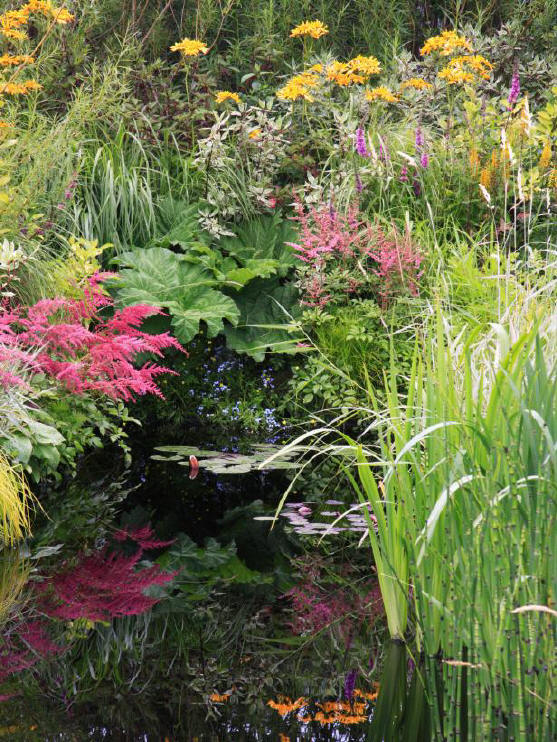 A bog garden is an area near a body of water that contains moist soil which produces a habitat for plants that thrive in moist conditions. Typically, bog gardens exist in low-lying areas near a pond, lake or stream, but a bog garden can be created in a container specially
designed for them.
A bog garden is an area near a body of water that contains moist soil which produces a habitat for plants that thrive in moist conditions. Typically, bog gardens exist in low-lying areas near a pond, lake or stream, but a bog garden can be created in a container specially
designed for them.
Bog gardens make a lovely attraction in any landscape. A carnivorous plant bog garden can be a center point of drama and intrigue as well as beauty. Artificial bogs can be constructed to cover a large or small area. These gardens can be positioned in the ground to appear natural or assembled in a container as a lovely and unique dish garden for the deck or patio.
Designing the layout of your bog garden will take foresight. Design a bog garden in much the same way you would any herbaceous garden, grouping the plants in relation to their heights, textures, and colors. If your garden is to be viewed from all sides, it is best to group taller plants toward the center. Smaller varieties can be showcased along the outer edges.
Aquatic carnivores or other water plants can be grown in the bog garden. The species of plants you can grow in a bog garden are those that thrive naturally in a peat-based soil. Most enthusiasts enjoy growing a wide variety of carnivorous plants in a bog garden such as caltha palustris (marsh marigold), dionaea muscipula (venus flytrap), myosotis scorploides (water
forget-me-not). A low-growing bog can be impressive by utilizing species such as Sarracenia purpurea (purple pitcher plant).

If your space is limited, consider a container bog garden. Miniature bog gardens are one of the most popular and simple ways to grow carnivorous plants. These are set up in the same way as larger artificial bogs. The only difference is that you’ll use smaller, freestanding containers. A wide variety of undrained, plastic garden bowls can be used for a bog garden. The
container should be lined with plastic.
Container bog gardens can be placed on sunny decks, patios, or balconies. They prefer five or more hours of full sun daily, preferably morning sun. The harsh afternoon sun can be detrimental to their appearance. Keep dead or dying leaves pinched off to obtain paramount attractiveness. Constant saturation is not needed, but the soil should not dry out. If a bog garden
is well-maintained, it will look lush and fresh throughout the summer. The containers can be moved to a garage or basement window during the winter months to accommodate their dormancy or into a sunroom if the plants grow year-round.
Randy Heffner from Aquascapes Unlimited, Inc. will present a workshop on Bog Plants and Their Endangered Habitat on Saturday, September 26, at the Adams County Agricultural & Natural Resources Center, 670 Old Harrisburg Road, Gettysburg, PA. This event is in conjunction with the Pennsylvania Native Plant Society 2015 Annual Meeting hosted by The Penn State Master
Gardeners of Adams County. The workshop will include a brief yet captivating lecture overview of bog plants and their threatened habitat. Participants will experience hands-on guidance for creating their own 18-inch terra cotta carnivorous mini bog garden to take home. The secrets to recreating a bog’s natural habitat in containers will be explored. Mr. Heffner will
educate the participants about container selection, creating the correct compositional soil mix, preferred plant selection, as well as conditions necessary for long term maintenance of these attractive and captivating container gardens. This is a unique educational opportunity that you will not want to miss.
Anyone interested in learning more about bog gardens is invited and encouraged to attend the workshop on September 26th at the Adams County Agricultural & Natural Resources Center. Online registration can be found at http://www.panativeplantsociety.org/pnps-2015-annual-meeting.html